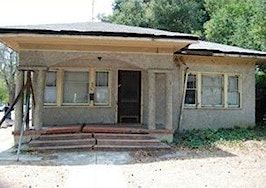The frequency of teardowns — situations where an older home is purchased and demolished to make way for a newer, large residence — is increasing, specifically in Chicago.
[Tweet “Teardowns are increasing, especially in Chicago”]
According to a recent release by Re/Max, construction permits were issued for nearly 2,100 new single-family homes in the Chicago area during the first four months of 2015, with teardowns paving the way. This permit volume represents a 54 percent increase when compared to the same period in 2013.
Because of the lack of vacant land in many Chicago neighborhoods and suburbs, buyers are acquiring older wood-frame homes or two-unit buildings with plans to level them. These types of properties are selling anywhere from $600,000 to $1 million, according to Re/Max.

In the past, families who would live in the new home following construction completed most teardowns. Today it’s often builders who are responsible for the majority of teardown activity, as these groups are growing more confident in demand for new homes and seeking sought-after sites.
Builders seeking residences to demolish usually follow strict financial guidelines but will make an all-cash purchase if the price is right. According to Re/Max, the majority of properties listed by its Chicago agents that are viewed as a potential teardown have generated multiple cash offers from homebuilders and developers.
[Tweet “Potential Chicago teardowns have generated multiple cash offers.”]
The new homes replacing teardowns tend to have common characteristics. Most range from 2,500 to 4,500 square feet and could include a finished basement, four or five bedrooms, three or more baths, a large family room, 9- or 10-foot ceilings, or a three-car garage.
The exterior typically is brick or a brick and stone combo. New homes built as part of a teardown are also roughly 20 percent smaller in square footage than a decade ago.
Distressed properties or aging homes are the most common candidates for teardowns. Chicago’s uptick in teardown activity comes at a time when Illinois leads the nation for highest percentage of distressed sales in May.
Of all closings during the month, 18.6 percent involved a distressed property. Other states with high percentages include:
- Michigan (15 percent)
- Florida (16.3 percent)
- Delaware (14.9 percent)


